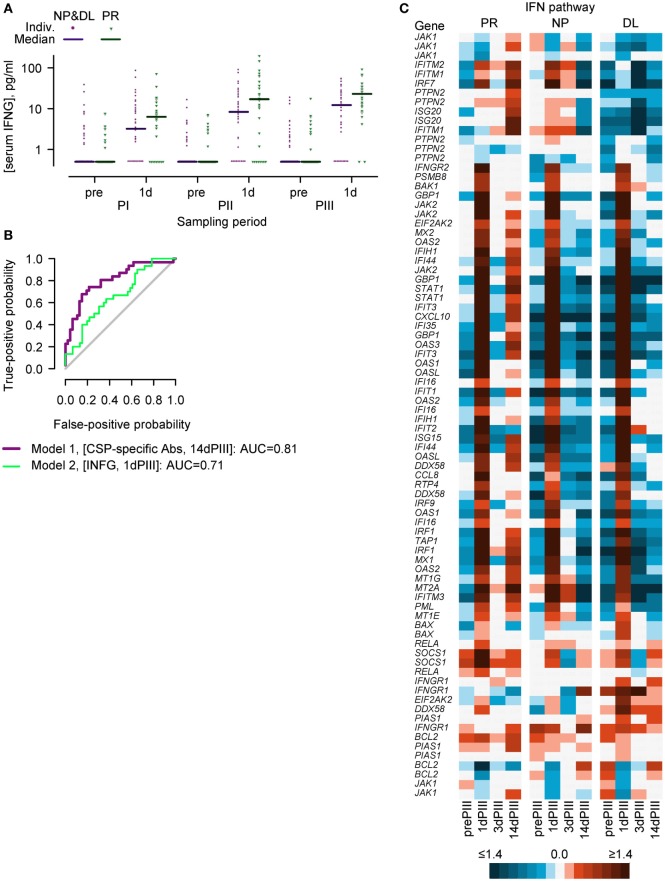Figure 2.
Serum IFN-γ concentrations and the expression of IFN-pathway genes in PBMCs suggest that the IFN-γ-signaling pathway could play a role in establishing a protective status prior to controlled human malaria infection. (A) Individual and median serum IFN-γ concentrations in protected (PR; N = 31) versus non-protected subjects (NP; N = 24) plus non-protected subjects with delayed onset of parasitemia (DL, N = 23) prior to (pre) and 1 day (1d) after each vaccine dose (PI, PII, or PIII). (B) Receiver operating characteristic curves showing the best fit logistic regression model classifying sporozoite challenge outcome (PR versus NP plus DL) with respect to circumsporozoite protein (CSP)-specific antibody concentrations at the day of challenge (14 days post-dose 3) and with respect to IFN-γ concentrations at 1 day post-dose 3 as covariates. (C) IFN-pathway gene expression in PR (N = 13), NP (N = 15), and DL (N = 11) groups before (prePIII) and 1, 3, and 14 days after the third vaccine injection (1dPIII, 3dPIII, and 14dPIII, respectively) represented as a heatmap. Mean RNA expression relative to prePI is described in accordance with the colored scale. Certain genes are represented by more than one probe set (see Table S1 in Supplementary Material).

